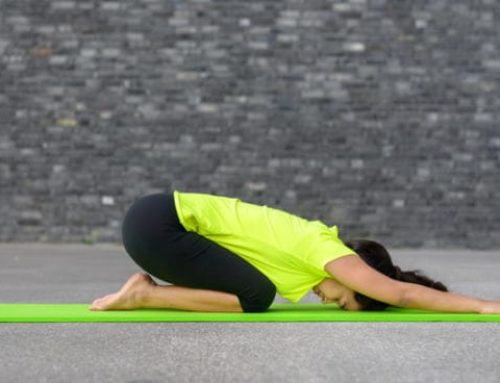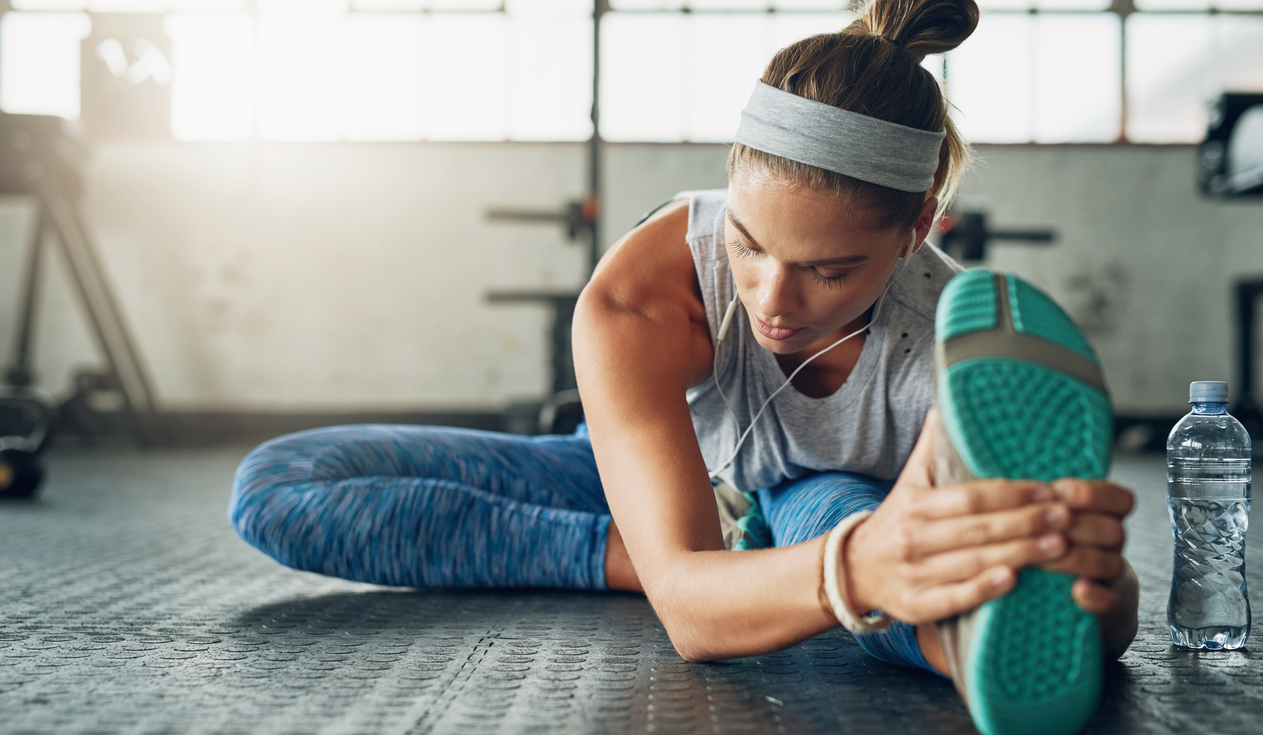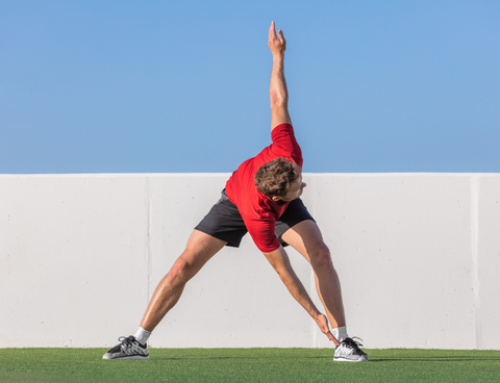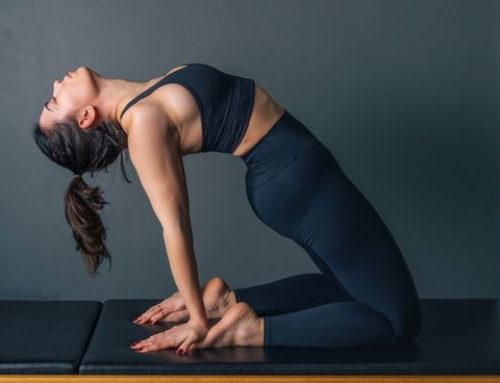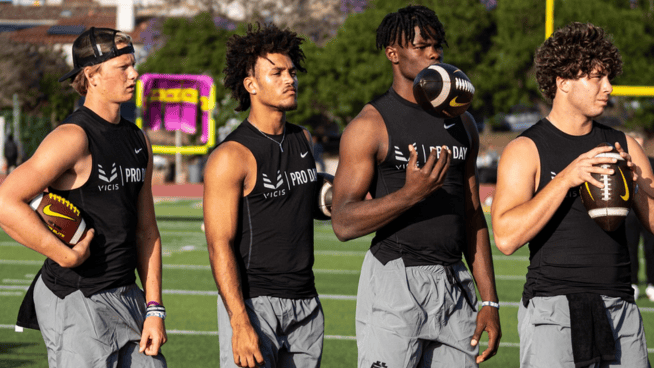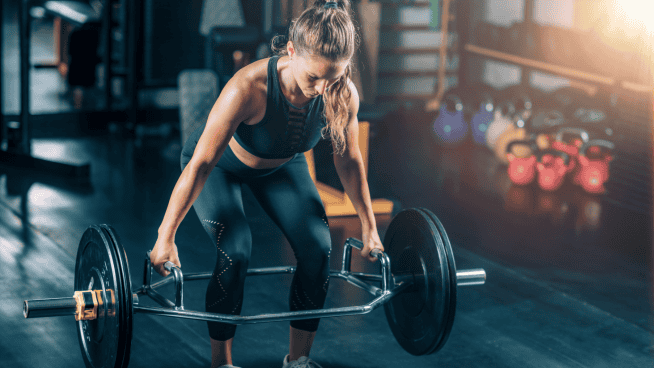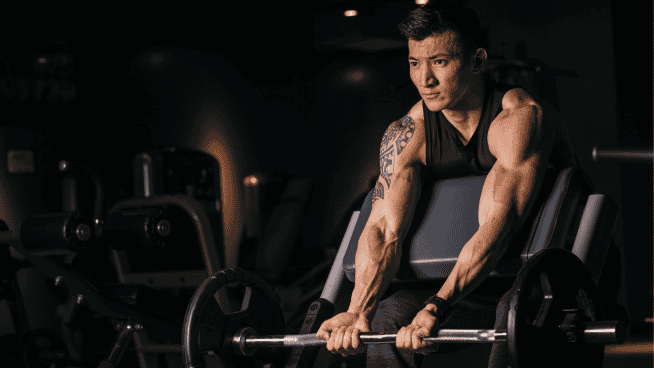6 Upper-Back Stretches That Improve Mobility and Reduce Pain
Too often, athletes have poor mobility in their upper back, what’s called the thoracic spine. However, some upper-back stretches can help you mobilize this crucial and troublesome area.
The thoracic segment of the spine encompasses a dozen vertebrae and lots of large surrounding muscles with the ability to flex, extend and twist.
RELATED: 6 Stretches to Alleviate Lower-Back Pain
However, strength imbalances, muscle tightness and poor posture can immobilize this area, not only sapping power in rotational skills, but drastically increasing the risk of a lower-back injury. Why? Because the lower back compensates and rotate even though it’s not supposed to.
Here is an arsenal of upper-back stretches and t-spine mobility drills that my staff and I use with our athletes.
Cook T-Spine Rotations
[youtube video=”I5ZE0augNv0″ /]This drill was created by renown physical therapsit and movement expert Gray Cook. What I love about it is that you can prevent unwanted movement in the lower back, which is very common when attempting to unlock and loosen up the middle portion of the back. Also, the knee drive inward against the medicine ball can generate further rotation and separation of the spine from anchor points underneath.
Kneeling T-Spine Extensions
[youtube video=”VpTG1h1zLzg” /]This mobility variation helps you learn the proper position of the lower back, which transfers to movements such as Squats and Deadlifts. It also automatically creates extension in the middle/upper back. Finally, the triceps brachii muscles receive full attention, since you are simultaneously flexing the shoulder and elbow—an unorthodox position, but necessary if you want to keep this muscle in peak form from a flexibility and strength standpoint.
Prone Scorpions
[youtube video=”U6Z4_uk3iDw” /]The Prone Scorpion has been a classic dynamic mobility exercise in many coaches’ programs for years. What’s great about it is that you kill two birds with one stone, knocking out a stretch for both the hip flexors and the t-spine—two problematic areas. Most notably, it targets the clavicular head of the pectorals, biceps and anterior deltoid muscles, which have a tendency to become tight and overactive.
Child’s Pose with Arm Lift
[youtube video=”XK29jIdQy68″ /]This is another classic but often forgotten mobility/activation exercise for the back and shoulders. Once you have established a proper Child’s Pose with your arms extended and your elbows fighting to stay straight, keep your glutes on your heels and drive one arm up and the opposite arm down into the ground. The serratus anterior and lower trapezius muscles receive quality attention. Moreover, finishing with your arm overhead and driving your elbow into lockout is a common weak point for several athletes, and it needs to be addressed.
RELATED: 5 Lower-Body Stretching Exercises Every Athlete Needs to Do
3-Point T-Spine Rotations
[youtube video=”9m9ffbAvedA” /]Sometimes you have to stop movement at one location to create motion elsewhere—in this case, the lower back. While in the quadruped position attempting to open up your chest cavity, you realize how hard it is to move, partly because your hips are pinned square with your knees in contact with the ground, limiting rotation potential at the lower back. This alignment is fantastic, because it forces you to establish range of motion at the t-spine; otherwise you stay pretty stuck.
Windmills
[youtube video=”s-lMatuL3fc” /]The Windmill is another hybrid mobility drill that simultaneously lengthens the muscles that lay anteriorly across the upper body and the adductor/groin muscles of the lower body.
Application
The question becomes, when is the best time to perform these exercises? Here are some recommendations.
Use as intra-set recovery fillers. Athletes who work in small groups often stand around and chat with each other when they finish an exercise. This is fine as they regenerate and recover for the next work set. But integrating a mobility exercise from the above list can make something of their downtime rather than slacking.
Aerobic/Active Recovery Work. Research has shown that active bodyweight movements stimulate recovery from intense workouts, and the above exercises are quite suitable for this purpose.
Cooldown. Simply perform these exercises after you finish your workout as part of a cooldown.
If you want to find out how to maximize your performance and function once you have laid the groundwork and improved your upper-body mobility, check out my book, The Speed Encyclopedia.
READ MORE:
[cf]skyword_tracking_tag[/cf]RECOMMENDED FOR YOU
MOST POPULAR
6 Upper-Back Stretches That Improve Mobility and Reduce Pain
Too often, athletes have poor mobility in their upper back, what’s called the thoracic spine. However, some upper-back stretches can help you mobilize this crucial and troublesome area.
The thoracic segment of the spine encompasses a dozen vertebrae and lots of large surrounding muscles with the ability to flex, extend and twist.
RELATED: 6 Stretches to Alleviate Lower-Back Pain
However, strength imbalances, muscle tightness and poor posture can immobilize this area, not only sapping power in rotational skills, but drastically increasing the risk of a lower-back injury. Why? Because the lower back compensates and rotate even though it’s not supposed to.
Here is an arsenal of upper-back stretches and t-spine mobility drills that my staff and I use with our athletes.
Cook T-Spine Rotations
[youtube video=”I5ZE0augNv0″ /]This drill was created by renown physical therapsit and movement expert Gray Cook. What I love about it is that you can prevent unwanted movement in the lower back, which is very common when attempting to unlock and loosen up the middle portion of the back. Also, the knee drive inward against the medicine ball can generate further rotation and separation of the spine from anchor points underneath.
Kneeling T-Spine Extensions
[youtube video=”VpTG1h1zLzg” /]This mobility variation helps you learn the proper position of the lower back, which transfers to movements such as Squats and Deadlifts. It also automatically creates extension in the middle/upper back. Finally, the triceps brachii muscles receive full attention, since you are simultaneously flexing the shoulder and elbow—an unorthodox position, but necessary if you want to keep this muscle in peak form from a flexibility and strength standpoint.
Prone Scorpions
[youtube video=”U6Z4_uk3iDw” /]The Prone Scorpion has been a classic dynamic mobility exercise in many coaches’ programs for years. What’s great about it is that you kill two birds with one stone, knocking out a stretch for both the hip flexors and the t-spine—two problematic areas. Most notably, it targets the clavicular head of the pectorals, biceps and anterior deltoid muscles, which have a tendency to become tight and overactive.
Child’s Pose with Arm Lift
[youtube video=”XK29jIdQy68″ /]This is another classic but often forgotten mobility/activation exercise for the back and shoulders. Once you have established a proper Child’s Pose with your arms extended and your elbows fighting to stay straight, keep your glutes on your heels and drive one arm up and the opposite arm down into the ground. The serratus anterior and lower trapezius muscles receive quality attention. Moreover, finishing with your arm overhead and driving your elbow into lockout is a common weak point for several athletes, and it needs to be addressed.
RELATED: 5 Lower-Body Stretching Exercises Every Athlete Needs to Do
3-Point T-Spine Rotations
[youtube video=”9m9ffbAvedA” /]Sometimes you have to stop movement at one location to create motion elsewhere—in this case, the lower back. While in the quadruped position attempting to open up your chest cavity, you realize how hard it is to move, partly because your hips are pinned square with your knees in contact with the ground, limiting rotation potential at the lower back. This alignment is fantastic, because it forces you to establish range of motion at the t-spine; otherwise you stay pretty stuck.
Windmills
[youtube video=”s-lMatuL3fc” /]The Windmill is another hybrid mobility drill that simultaneously lengthens the muscles that lay anteriorly across the upper body and the adductor/groin muscles of the lower body.
Application
The question becomes, when is the best time to perform these exercises? Here are some recommendations.
Use as intra-set recovery fillers. Athletes who work in small groups often stand around and chat with each other when they finish an exercise. This is fine as they regenerate and recover for the next work set. But integrating a mobility exercise from the above list can make something of their downtime rather than slacking.
Aerobic/Active Recovery Work. Research has shown that active bodyweight movements stimulate recovery from intense workouts, and the above exercises are quite suitable for this purpose.
Cooldown. Simply perform these exercises after you finish your workout as part of a cooldown.
If you want to find out how to maximize your performance and function once you have laid the groundwork and improved your upper-body mobility, check out my book, The Speed Encyclopedia.
READ MORE:

